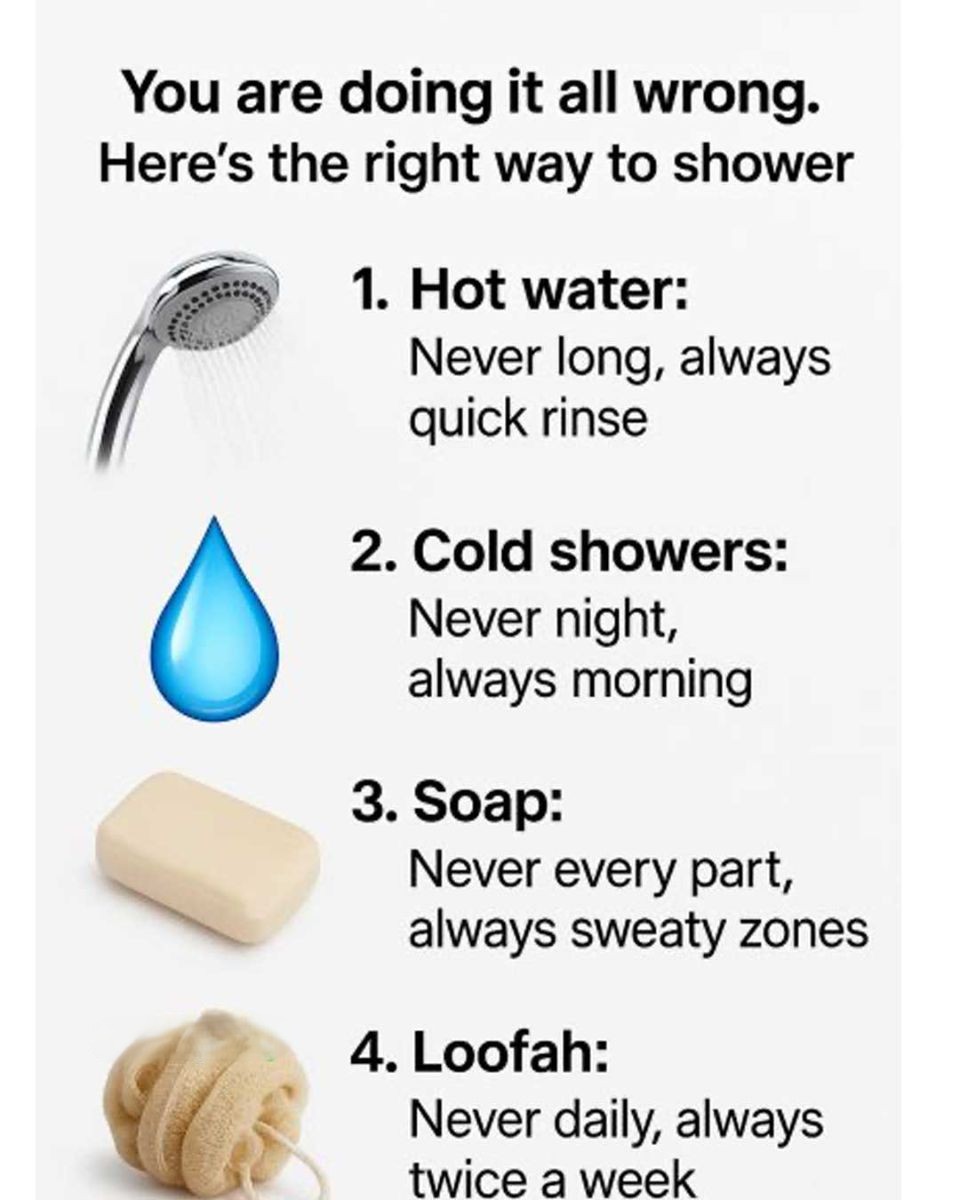Showering is a daily ritual for most, a moment to cleanse and refresh before embarking on the day’s journey or unwinding before bed. Yet, despite its routine nature, many of us might be unknowingly making common mistakes that could affect our skin, health, and even the environment. From water temperature to the type of soap used, the fine details of our shower habits can have far-reaching impacts.
In this comprehensive guide, we will explore the art of showering, delving into the science behind optimal practices. Whether you’re aiming to boost your morning energy levels or seeking to reduce your ecological footprint, there’s more to showering than just getting wet. Read on to discover how to transform this everyday habit into a beneficial and rejuvenating experience.
1. The Ideal Water Temperature: Why Hot Showers Should Be Brief
While a hot shower can feel incredibly soothing, especially on a cold day, it’s important to be aware of its effects on your skin. Water temperatures above 105°F (40°C) can strip your skin of natural oils, leaving it dry and irritated. Dermatologists recommend keeping showers warm, ideally between 95°F and 99°F (35°C to 37°C), to maintain the skin’s moisture balance.
If you can’t resist a hot shower, try to limit it to five minutes or less. Prolonged exposure to hot water can exacerbate conditions like eczema and psoriasis. Instead, consider starting with warm water and finishing with a quick cool rinse to invigorate your senses without compromising skin health.
2. Morning Boost: The Benefits of Taking Cold Showers at Dawn
Cold showers might sound unappealing, but they have numerous benefits that can give your morning a powerful kickstart. Cold water, typically below 70°F (21°C), has been shown to increase alertness by boosting circulation and heart rate. The shock of cold water can also trigger the release of endorphins, known as the ‘feel-good’ hormones, helping to reduce stress and improve mood.
Start by gradually decreasing the water temperature at the end of your shower for a refreshing finish. Over time, you may find yourself embracing the full-body cold shower, which can enhance your immune response and increase your metabolism, setting a positive tone for the day ahead.
3. Targeted Cleansing: The Right Way to Use Soap
When it comes to using soap, less is often more. Focus on cleansing areas that produce sweat and odor, such as the armpits, groin, and feet, rather than soaping up every inch of your skin. Overuse of soap, especially those with harsh chemicals, can strip the skin of essential oils, leading to dryness and irritation.
Opt for a mild, pH-balanced soap that suits your skin type. For those with sensitive skin, fragrance-free and hypoallergenic options are ideal. Remember, it’s important to rinse thoroughly to remove all soap residue, which can otherwise cause dryness and itchiness.
4. Exfoliation Basics: How Often to Use a Loofah
Exfoliation helps to remove dead skin cells, promoting smoother and healthier skin. However, over-exfoliating can cause more harm than good. Using a loofah or exfoliating scrub 2-3 times a week is generally sufficient for most skin types.
Be gentle when exfoliating; aggressive scrubbing can lead to micro-tears in the skin, potentially causing irritation and breakouts. Always follow up with a moisturizer to hydrate newly exposed skin cells. Regularly replace your loofah to avoid bacterial buildup, ideally every four weeks.
5. The Science Behind Shower Timing: How Long Is Too Long?
While it can be tempting to linger under the soothing spray of a shower, it’s best to keep it brief. Dermatologists recommend showering for 5 to 10 minutes to prevent skin from becoming too dry. This timeframe is sufficient to cleanse and refresh without stripping away essential skin oils.
For those concerned about water conservation, shorter showers are essential. Reducing your shower time by just a few minutes can save gallons of water, benefiting both your skin and the environment.
6. Hair Care Myths: Shampooing Frequency Demystified
The frequency of shampooing depends largely on hair type and lifestyle. For most people, washing hair every 2-3 days is sufficient to maintain cleanliness without over-stripping natural oils. Those with oily hair may need to wash more frequently, while individuals with dry or curly hair might benefit from less frequent washing to preserve moisture.
Consider using sulfate-free shampoos to minimize irritation and dryness. Additionally, using a conditioner after shampooing can help to rehydrate and protect hair, keeping it soft and manageable.
Next Page
